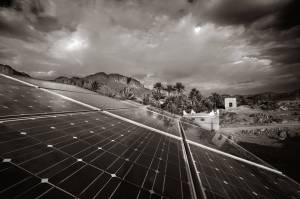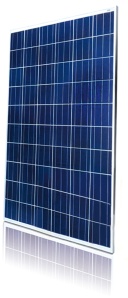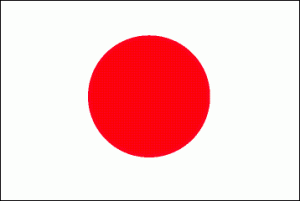Leading monocrystalline PV producers have been introducing polycrystalline modules to their product portfolio in the last years, like ISOFOTON did last month. According to experts, polycrystalline and monocrystalline modules’ durability and longetivity is comparable. However, both respond to different scenarios and conditions. For example, in Europe, mono is well suited for northern countries like Germany, Denmark, the UK, or the Netherlands, among others… Polycrystalline applies well for southern countries like Italy, Spain, Portugal and Greece (especially in the south of these countries).
Lower price
Polycrystalline solar panels are less expensive, especially those with small to medium sized roofs. The reason polycrystalline solar panels are less expensive than monocrystalline solar panels, is because the way the silicon is made. Basically, the molten silicon is poured into a cast instead of being made into a single crystal. This square mold is cooled and cut into perfectly square wafers. Although molding and using multiple silicon cells requires less silicon and reduces the manufacturing costs, it also reduces the efficiency of the solar panels.
Efficiency at higher temperatures
Polycrystalline modules perform well under high temperatures and high radiation environments. Polycrystalline cells are not very dark, therefore the cell doesn’t absorb so much temperature under warmer temperatures and its reduction of efficiency is not very high. Polycrystalline modules are also especially suited during sunrise and sunset hours, because of the light/ray angle and atmospheric refraction.
Installations in ample spaces
Polycrystalline modules perform well in buildings and installations in ample spaces, because a panel’s peak efficiency is not the primary consideration for most solar system owner-to be. Unless there are no budgetary constraints or space limitation, it is important to consider the system, as a whole, balancing price with quality.
Manufacturers’ strategy
In the last years, several manufacturers have been implementing different strategies to benefit from polycrystalline features.
Several European monocrystalline producers have adapted some polycrystalline features into their monocrystalline modules, like ISOFOTON. For example, monocrystalline modules include textured crystals.










